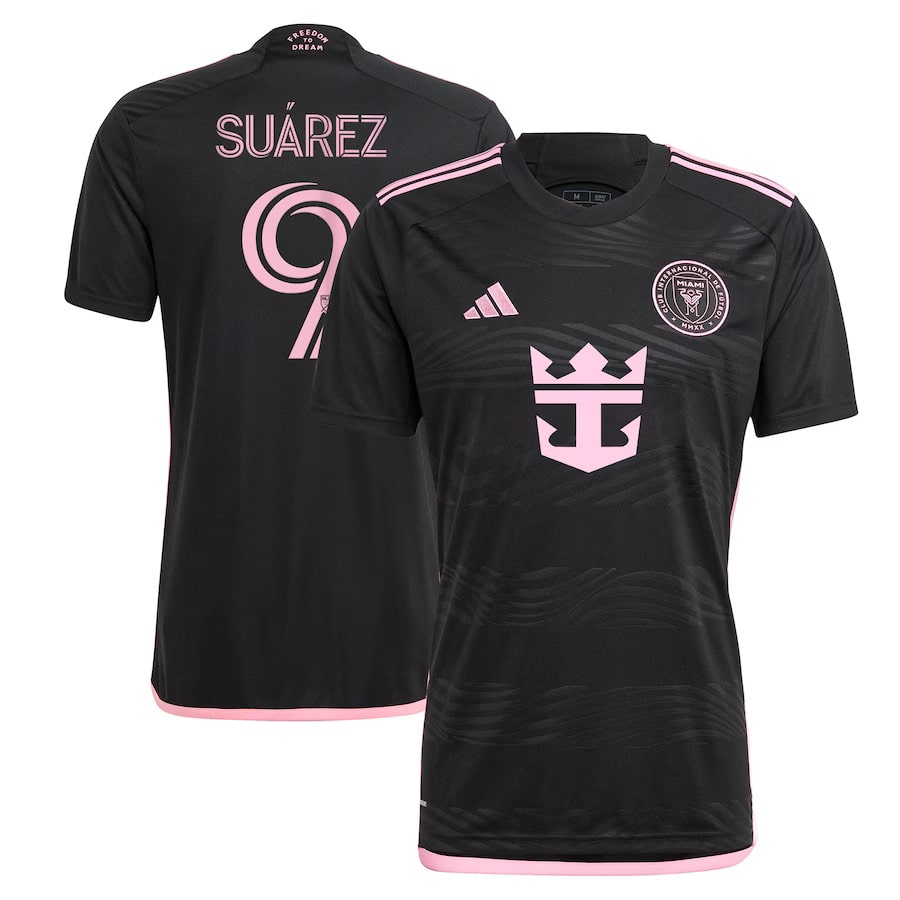Football, which is among many of the most played sports in the world is not just evolving with respect to gameplay strategies, tactics, and fans involvement as well as in terms and design clothing for football. In the evolution of soccer kits that range from simple woolen shirts to modern-day, high-tech performance equipment, reflect the development of the sport as well as its growing global impact. You can choose to support traditional clubs or newer teams, like Inter Miami, football gear is an integral part of the experience and each season Jersey Inter Miami 2025 data->brings about a new chapter in the history of kit.

The Early Days: Simple Designs and Heavy Materials
In the early days of the game, soccer players would wear basic woolen jerseys that were typically the team's colours typically with little regard for comfort or technology. The shirts were heavy and abrasive, which could cause discomfort in games particularly in hot temperatures. The jerseys did not have logos for sponsors or modern branding, and their design was minimal. Soccer uniforms during the mid-19th century were mostly made of natural materials like wool. Wool, though durable, weren't comfortable or breathable.
The most notable feature of football kits in the era was their simplicity. Teams selected plain designs that had minimal ornamentation. Kit Inter Miami for example, though a newer club it evokes a certain nostalgia for old kits, focusing on simple elegance and fashion although it's a modern outfit.

The 1960s-1970s: Introduction of Synthetic Materials
In the 1970s and 1960s, football uniforms were evolving by the introduction textiles made of synthetic material. Polyester became a common choice as it was a less breathable and lighter alternative to wool. The football kit's design also began to reflect modern-day sensibilities in the form of team logos and numbers on the kits. This was also the time of the appearance of sponsors' logos but they were fairly minimal in comparison to the modern kits.
This period marked the birth to kits that not just practical, but also trendy. When the 70 World Cup, for example, showcased the iconic Brazilian green kit, which became a symbol of soccer's excellence and global identity. The innovations in design during the 1970s laid the foundation for the future, making football kits an integral element of the sport's identity.

The 1980s-1990s: Commercialization and Bold Designs
In the 1990s and 1980s, football uniforms began to be commercialized. The sponsor logos were larger and much more noticeable, as teams began to experiment with more colorful designs. In this era, we also saw the introduction of short-sleeve shirts becoming the norm, even though long-sleeve tops were still worn at colder matches. Football shorts became smaller and more comfortable to the streamlined design to the kits.
The 1990s also marked the emergence of the graphically striking designs that featured bright designs, geometric patterns as well as daring new designs. Famous kits like Manchester United's 1990s shirt in the 1990s and AC Milan's red-and-black striped jerseys were able to attract a lot of attention. At the same time the major sponsors started taking up more prominent spots on the clothing, leading to kits that often looked more than billboards than traditional team apparel.
In this period, teams such as Inter Milan (whose kits reflect the history of Italy's rich football history) started to incorporate more unique designs, and mixing traditional colors and modern designs. As late as the 90s, football kits became almost just as important to fans the players themselves. They were a symbol of the character of the team both on and off the pitch.
The 2000s: Technological Innovation and Performance
As football became more globalized in the early 21st century, kit manufacturers began to focus heavily on performance-enhancing technology. The 2000s were the time for the rising popularity of lighter, moisture-wicking fabrics such as Adidas' ClimaCool or Nike's Dri-FIT technology which allowed players stay dry and comfortable even in the most intense games.
The designs of the shirts also became more refined, with subtle patterns and cut-offs that were streamlined. The kits for players were not just practical, but also innovative, with vents, stretchable fabrics, and tailored fits. Sponsorships were growing in importance, with organizations like Nike, Adidas, as well as Puma making headlines leading the way in the production of kits that influenced the design styles for soccer teams across the world.
This was also the time when big clubs, such as Barcelona and Real Madrid, began to invest heavily in their brand's image making kits that reflected their modern sophisticated, polished image.
The 2020s: Sustainability, Personalization, and Bold Statements
The most recent update of football uniforms is focused in sustainable development, personalization in the design of kits which make bold statements on and off the field. These 2020s have seen a rising demand for environmentally-friendly materials and many teams are shifting to recycled fabrics and eco-friendly manufacturing processes. This shift is in line rising global awareness of sustainability, as fans, club members, and players strive to reduce their environmental impact.
With regards to design the decade of 2020 has seen the creation of more customized kits. Fans can now choose to include their name and number on their jerseys, giving the jersey a personal touch. Teams are also playing